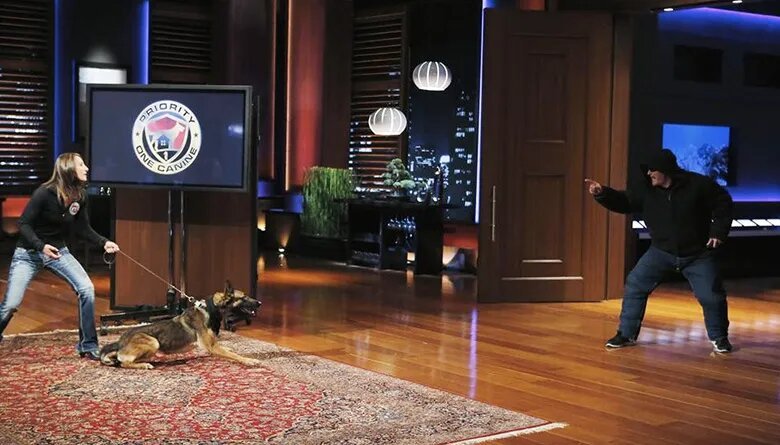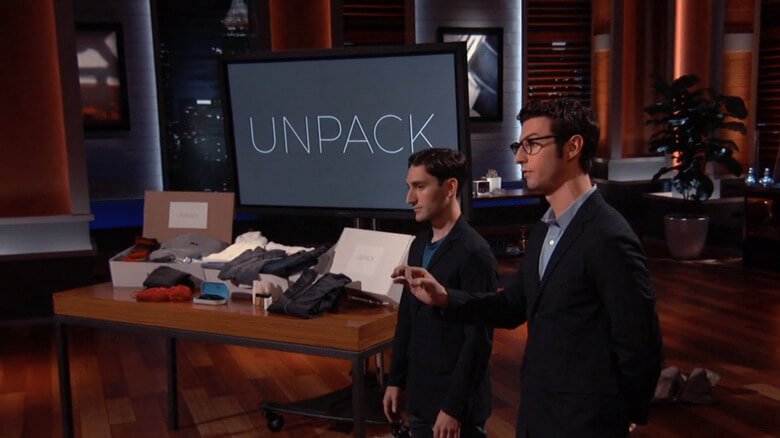You’ve seen the Shark Tank episodes where a wild demo steals the show, the Sharks raise eyebrows, and someone walks away without the deal. The real question? Does a no from the Sharks mean it’s game over—or just the opening bell? Let’s break down the Priority One Canine story, because this is a classic case of a business working its angle, missing the Shark money, and STILL raking in high-dollar wins.
Contents
ToggleWho Is Behind Priority One Canine?
Let’s skip the founder fairy tale and keep it real. Wade Morrell—a former Marine—and his wife Lori, run the show. He brings military discipline and dog training chops. She brings business brains and can command a room. The combo? Deadly smart. When you’ve got this blend of skills at the top, things get interesting fast.
Almost every week, someone with a cute pet pitch walks into the Tank and gets mowed down. These two? They walked in with 70 pounds of Belgian Shepherd muscle and a track record you can’t fake. It’s not just about dogs for them; it’s about trust, status, and actual security.

What Does Priority One Canine Sell?
Forget squeaky toys or basic obedience. Priority One Canine trains elite security dogs. We’re talking animals that will cuddle your kids at night but flip a switch the second they sense danger. There are training tiers—$20,000, $30,000, $40,000—no, that’s not a typo. This isn’t middle America’s PetSmart class. This is the Ferrari of family protection.
Customers aren’t buying a pet; they’re buying peace of mind. Each dog comes pre-trained to spot and react to threats—no hope this works learning curve. These dogs become part of the family, but with bodyguard credentials.
The Shark Tank Pitch: What Actually Happened?
Let’s recap, because Shark Tank Season 6, Episode 8 was a showstopper. Lori rolled in with a canine loaded for action. Wade set up a live attack scenario as the dog dropped a would-be attacker (played by Wade himself) right on TV. Shock factor? Off the charts.
The ask: $75,000 for 20% equity. That’s a $375,000 valuation—a reasonable number for a bespoke, labor-heavy business. On numbers, they weren’t inflating or playing games.
But pitch drama doesn’t always get a deal. Mark Cuban, Daymond John, Lori Greiner, Robert Herjavec, and Kevin O’Leary all watched, nodded, and then passed in quick succession. The core objection? Scalability and manpower. It’s hard to pump out hundreds of highly-trained dogs a year with a small team. The business demands trust, not mass production.
Net Worth and Revenue: What’s the Real Score?
Here’s where most TV fans stop watching. They miss the real grind after the glam. Since the show, Priority One Canine has cranked up sales, even with zero Shark dollars. Word from SharkWorth puts their annual revenue above $2 million—and that’s in a category where client lists are private and deals are closed behind mansion gates.
Net worth isn’t public, but do the math. You’re moving multiple dogs at $20,000–$40,000 a pop, not counting ongoing training, follow-up services, and upgrades for existing clients. With their reputation, you better believe the profit margin’s healthy—especially with Wade and Lori still running point.
Why Did the Sharks Walk Away?
It wasn’t the product. Anyone could see these dogs were the real deal—confident, obedient, and chillingly effective. The problem was scale.
Let’s be blunt: High-ticket, low-volume businesses are tough to build to Shark-level exits. Every dog needs months of hands-on work. You can’t just hire a kid off the street to train a $40,000 Belgian Shepherd to protect a billionaire’s family. Systemic, repeatable training? Sure, but only at a pace you control, not a pace that gets VC investors drooling. The bottleneck is expertise.
If you’re a founder, don’t take it personally when investors say too hard to scale. They’re not wrong—they just play a different game. If you want to build a household brand, this model is a grind. If you want a premium, lucrative niche, you’re golden.
What’s Going on With Priority One Canine Today?
Here’s the twist most Shark Tank viewers don’t expect: Failing to land a deal didn’t slow them down. The TV exposure worked. They built a roster of high-net-worth clients—celebrities, CEOs, sports stars, you name it. When safety is non-negotiable, price becomes background noise.
The company has kept its edge, expanded quietly, and built a reputation as the name for family-friendly guard dogs. They didn’t franchise, they didn’t go big-box—they went deeper, not wider. And it’s working.
Website analytics and reports from SharkWorth suggest ongoing expansion, steady sales, and even an uptick in demand after every national news story about home invasions or celebrity security scares.
Who Actually Buys These Dogs?
Picture this: velvet ropes, bodyguards in sunglasses, fleets of black SUVs. That’s the customer base. Think Hollywood, pro athletes, powerful executives, and families with more money than second chances.
Why do these clients line up? Simple: Security that blends in. Your home is safer, but it still feels like home. Anyone can get cameras or iron gates. Almost no one else can get a dog that hugs your kid one minute and disables a threat the next.
The market is sticky because referrals drive sales. Once one VIP trusts you with their safety, everyone in their circle follows. That’s not a Facebook ad game; that’s pure, old school network marketing.

Lessons: What Priority One Canine Gets Right (and What You Should Steal)
Shark Tank loves mass market. But if you’re pitching a specialized business, play to your strength. The Morrells didn’t water down their brand or try to fit every family. They owned their niche.
The truth? Some of the strongest businesses never scale in the traditional sense—they own a market no one else can touch. This is the Scrub Daddy story flipped: less volume, more value. I bet on reputation and tight-lipped operations every time when the stakes are personal security.
Also, they turned no deal into a free Super Bowl ad. That kind of press shot them right into the feeds of people who matter. Your lesson: it’s not about getting Shark money, it’s about staying visible, building trust, and converting attention into cash.
FAQs: Straight Talk on Priority One Canine
Is Priority One Canine from Shark Tank still in business?
Yes. They’re thriving. Revenue now tops $2 million per year, and they still train out of the Cleveland, Ohio area.
Did Priority One Canine get a deal on Shark Tank?
No deal. Every Shark passed, but it was never a reflection on the product’s quality.
How much does a personal protection dog from Priority One Canine cost?
Training packages range from $20,000 to $40,000, based on the required level and the dog’s capabilities.
Who are Priority One Canine’s main clients?
Their bread and butter is high-net-worth individuals: celebrities, athletes, business icons, and wealthy families concerned about security.
Where is Priority One Canine located?
They operate out of the Cleveland, Ohio region but serve clients nationwide (sometimes internationally).
What is the current net worth or annual revenue for Priority One Canine?
Annual revenue is north of $2 million, according to SharkWorth and recent business updates.
What makes Priority One Canine different from other dog training companies?
Most dog trainers can’t deliver true protection and family-friendliness in a single dog. Priority One Canine does—every time.
Are the founders still running the business?
Wade and Lori Morrell still lead operations, handling client relationships and overseeing every dog’s training process.
The Takeaway: Not Every “No” Is a Loss—Sometimes, It’s the Start of Real Hustle
Priority One Canine didn’t land Shark cash. And frankly, they didn’t need it. They played their hand, leveraged TV exposure, and then set their sights higher than anything a reality show could deliver. For founders with tough-to-scale businesses: focus on reputation, consistency, and owning your segment.
The next time you see a flashy pitch and a crowd of Sharks passing, pause before you mourn. Sometimes, no deal just means more freedom—and in the right hands, way bigger returns. This is a business that proved the point.










